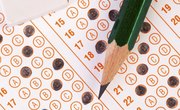Humans have long sought reliable ways to measure intelligence. Modern intelligence tests, or IQ tests, have their foundation in the work of French psychologist, Alfred Binet, and his collaborator, Theodor Simon, who developed one of the first standardized scales of human intelligence.
Today there are dozens of intelligence tests that can be used to reliably predict academic success and achievement. The Bracken School Readiness Assessment is an individual test of cognitive skills for use with children in pre-K through second grade. The assessment was designed by Bruce A. Bracken, Ph.D.
Design
The Bracken School Readiness Assessment is made up of the first six subtests from the revised Bracken Basic Concepts Scale (BBCS-R). The test is individually administered, so length of test time depends upon the child. Concepts are tested using oral and visual means. The subtests ask children to do the following tasks:
Identify common colors by name. Identify upper-case and lower-case letters. Identify single- and double-digit numerals, and count objects. Demonstrate knowledge and understanding of words used to depict size (such as tall or wide) Match or differentiate objects based on a specific characteristic. Identify basic shapes by name.
Scoring
The Bracken School Readiness Assessment is a standardized test which means it was developed according to approved procedures and guidelines. Likewise, it is administered and scored using professional testing guidelines.
Raw scores for the BSRA can be converted to percentile rank scores and standard scores. The test comes with guides to convert scores into descriptive categories such as "advanced" or "delayed".
Uses
The BRSA is primarily used to assess children's knowledge of basic concepts necessary for success in preschool, kindergarten and early elementary classrooms.
Some public and private schools use the BSRA to determine student eligibility for gifted and talented programs. The test also is used to screen for underlying language disorders that may require further intervention.
Validity
A 2004 study of the BSRA showed it to be a reliable indicator of readiness for first grade as well as performance on the Metropolitan Readiness Test (MRT).
According to an abstract of the study available through the Education Resources Information Center, the BSRA was given to kindergarten students in two rural elementary schools. Eight months later, those students took the reading section of the MRT-6. Teachers also were asked to assess each student's readiness and document any referrals for special services.
The study found the BSRA showed a strong correlation with the children's readiness ratings and with rates of referral for services. Therefore, the study determined the BSRA is a valid screening tool to assess kindergarten students readiness for first grade.
Concerns
Many experts urge caution when using and interpreting readiness assessments such as the BRSA. A 2007 report on such assessments by the Franklin County Department of Jobs and Family Services says there is debate among early childhood education professionals about how school readiness should be defined. The report also cautions that early childhood educators sometimes use tests such as the BRSA for inappropriate purposes, such as retaining children in kindergarten or diagnosing learning disabilities.
Related Articles
References
Writer Bio
Alisha Hipwell has 12 years of experience writing for newspapers, magazines and businesses. Her work has appeared in the Pittsburgh Post-Gazette, Pittsburgh Business Times, Pittsburgh Professional and Whirl. She earned a Bachelor of Science in English education from Miami University and taught middle and high school English before starting her freelance career.











